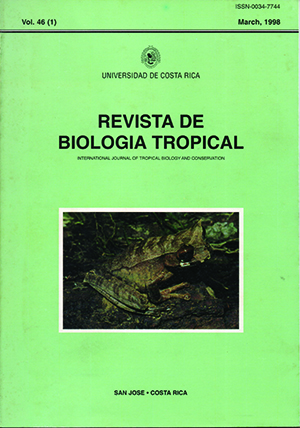Abstract
Using Mark-Recapture methods the growth effort of Sceloporus scalaris was studied at La Michilla Biosphere Reserve, Durango, Mexico. A total of 146 recaptures on 68 individuals were obtained over four years on a 50 000 m' transect. To calculate the growth rate of Sceloporus scalaris individuals, we analyzed the data from two sources. The first using the recapture records of the same individuals over different seasons and the second using the records of cohorts during different períods. The growth effort of S. scalaris drastically diminishes as the organism grows. The growth rate of males and females is about equal for individuals from both clutches. In adults, where it is possible to compare among seasons, we measure quicker growth duríng the spríng. The growth paltern of S. scalaris at La MichiIla follows the predíctions proposed by the Bertalanffy model. Maximum growth rates are in the younger age classes and these rates decrease as size increases. The growing períod of S. scalaris is correlated with the seasons at La MichiÜa Biosphere Reserve. Newborn S. scalaris appear when the availability of nouríshment is still the most propítíous for growth at faster rates. Such adaptations to the environment determine many key population attríbutes of this species in this zone. The sexual maturíry age of S. sealaris is very early at La MichiÜa, only 4.5 ro 6 monrhs. Undoubtedly, the growth partern of S. scalaris at La MichiIla Biosphere Reserve can help explain the srructure and dynamics of this populatíon.##plugins.facebook.comentarios##

This work is licensed under a Creative Commons Attribution 4.0 International License.
Copyright (c) 1998 Revista de Biología Tropical






